The Two Most Important Skills for Beginner Griddlers
As a beginner griddle owner, mastering your flat-top grill can feel overwhelming, but don’t worry! Two foundational skills will make you a pro in no time: temperature control and cooking order. Let’s break these down so you can create perfectly cooked meals every time.
Also I have a whole page with all my posts about "The Foudations of Griddling". This covers things like seasoning, cleaning and common mistakes to avoid. You can check it out here.
Skill 1: Mastering Temperature Control
Temperature control is the backbone of griddle cooking. Unlike a traditional stovetop, griddles have a large surface area, and managing heat effectively ensures your food cooks evenly and deliciously. Also, from my experience I have found that most griddles run a little hot. That is fine when you are searing a steak or making a smashburger. However, it's not good for making eggs and pancakes. Here are some tips to get started::
Cook by Temperature, Not Knobs
The knobs on your griddle are not precise. Instead, invest in an infrared thermometer to measure the surface temperature accurately. This tool is a game-changer for achieving consistent results. If you don’t have one yet, I'd reccomend this two in one thermometer from Thermopro.
I've had mine for about 9 months and love it. It has a probe thermometer to get the internal temperature of the meat, and an infrared thermometer for the griddle surface. They gave me a 20% off code to share with all my followers (for orders over $30). If you want to grab one use the link and code below.
(This is an affiliate link so I do receieve a small commission at no additional cost to you)
ThermoPro 2 n 1 Infrared Thermometer : https://bit.ly/2n1Therm
Get 10% off by using code Johnny10 (with minimum spend $30)
There are three main reasons why I don't reccomend cooking by knobs on your griddle.
- First off there are multiple different sizes of griddles. I've seen everything from a single burner griddle, all the way up to a six burner griddle. All the burners on a griddle work together to heat up one solid top. So if you have a two burner griddle on medium it will not be as hot as a six burner griddle also on medium. Those six burners are going to combine to make the griddle surface much hotter.
- The second reason is that we are cooking outside in different parts of the world at different times of the year. Unlike your stove which is inside, we could be cooking in 90 degrees weather or in 40 degrees weather. This will obviously change the surface temperature of your griddle. So medium in Florida mid summer will not be the same surface temperature as medium in Wisconsin during the fall.
- Finally there are tons of different brands of griddles with different btu's, and that can affect the temperature. For example, my first griddle was a Camp Chef and it got very hot very fast. My next one was a Blackstone, which did not get quite as hot when I set the knobs on medium for 10 minutes.
How to Get Your Griddle to the Right Temperature
Getting your griddle to the proper temperature can be tricky, but these tips will help:
- Preheat Slowly: Start by preheating all burners on low, even if you don't plan to use them all. This prevents warping and allows the heat to distribute evenly. After 10 minutes, check the temperature with your infrared thermometer. If it's not hot enough, gradually increase the heat. It's easier to raise the temperature than to cool it down.
- Put Food Down at the Right Time: Once the griddle reaches your desired temperature, add your food immediately. Don't let it preheat for too long, as the surface can overheat. I like to check my temperature no more than 5 to 10 minutes after I turn it on. If you start prepping inside and leave the griddle for 20 minutes, it could get way hotter than you wanted.
- Turn Off Burners: I always turn all my burners on to preheat the griddle, but then during cooking I may turn some off to maintain heat control. For example, if you're cooking in the middle two zones, switch off the outer burners to prevent overheating. This also helps create warming zones. Lets say I'm doing breakfast and the bacon and potaoes are done cooking but I want to keep them warm. I will shut off an outside burner and push the bacon and potatoes to that side.
- Use Residual Heat: For delicate items like eggs, you can turn off the burner entirely and use residual heat to cook them slowly and evenly. This technique is perfect for preventing overcooking. Or if your griddle is too hot and you want to lower the temp, you can squirt down a little bit of water to do so.
- Learn Your Griddle's Hot and Cool Spots: Every griddle has unique temperature patterns. Over time, you'll learn which areas run hotter or cooler. Use cooler zones for tasks like toasting buns or cooking eggs, and reserve hotter spots for searing or frying. A good way to learn your hot and cold spots is a toast test. I have a video below going over that process.
General Temperature Guidelines for Griddle Cooking
- 300°F to 325°F: Perfect for delicate foods like eggs, omelets, toast, buns, and hot dogs. Eggs are especially sensitive—keep it low and slow to avoid burning.
- 375°F to 400°F: The sweet spot for most cooking. This range works for bacon, pancakes, potatoes, vegetables, ground beef, grilled chicken, and regular hamburgers.
- 450°F and Above: Reserved for searing. Use this high heat for smash burgers or quickly searing a steak. Remember, searing is brief; for steaks, reduce the temperature after searing to finish cooking.
Why It Matters
Cooking at the right temperature prevents common issues like burning, undercooking, or drying out your food. Plus, it’s a great way to impress friends and family with perfectly cooked meals. You can get a free copy of my temp chart when you sign up for my weekly newsletter here.
Skill 2: Cooking Order Matters
The order in which you cook foods on your griddle can make or break a meal. Timing is crucial to ensure everything is ready to serve at the same time, especially when cooking breakfast or multi-item meals.
The Golden Rule
Start with the foods that take the longest to cook.
For example, when making breakfast:
- Potatoes: These take the longest, so start them first.
- Bacon: Next up, as it needs time to render and crisp.
- Pancakes: They cook quickly but should be ready before the eggs.
- Eggs: Save these for last, as they cook in just a few minutes.
Use Warming Zones
Turn off or lower the heat on the outer burners to create warming zones. Once a dish is done, move it to these cooler areas to keep it warm without overcooking. This technique is especially helpful when preparing large meals. Also, I often use a small warming rack to hold stuff slightly off the griddle but still close enough to stay warm. You can get one of those here.
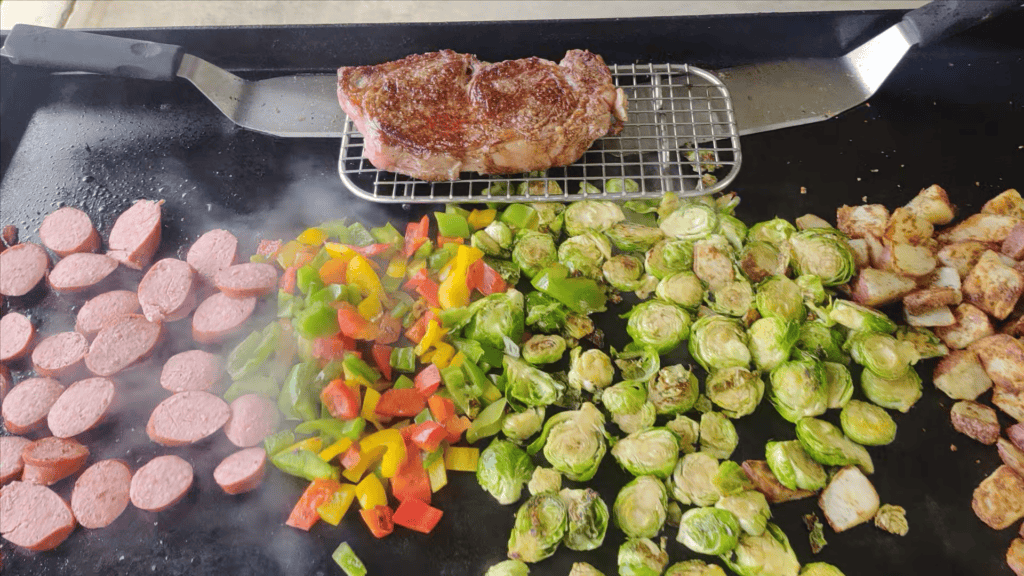
Why It Matters
Cooking in the right order and using warming zones prevents overcooking and ensures that everything is hot and ready to serve at the same time. No more cold pancakes or overdone eggs!
Bring It All Together
By focusing on temperature control and cooking order, you’ll quickly gain confidence with your griddle. These skills are the foundation for creating delicious meals and avoiding common pitfalls as a beginner griddle owner.
Want to learn more? Grab a copy of my ebook "Griddle 101: The Complete Beginners Guide to Flat Top Grilling". It goes over everything I know about griddling and has 101 delicous recipes for only y$15. Happy griddling!

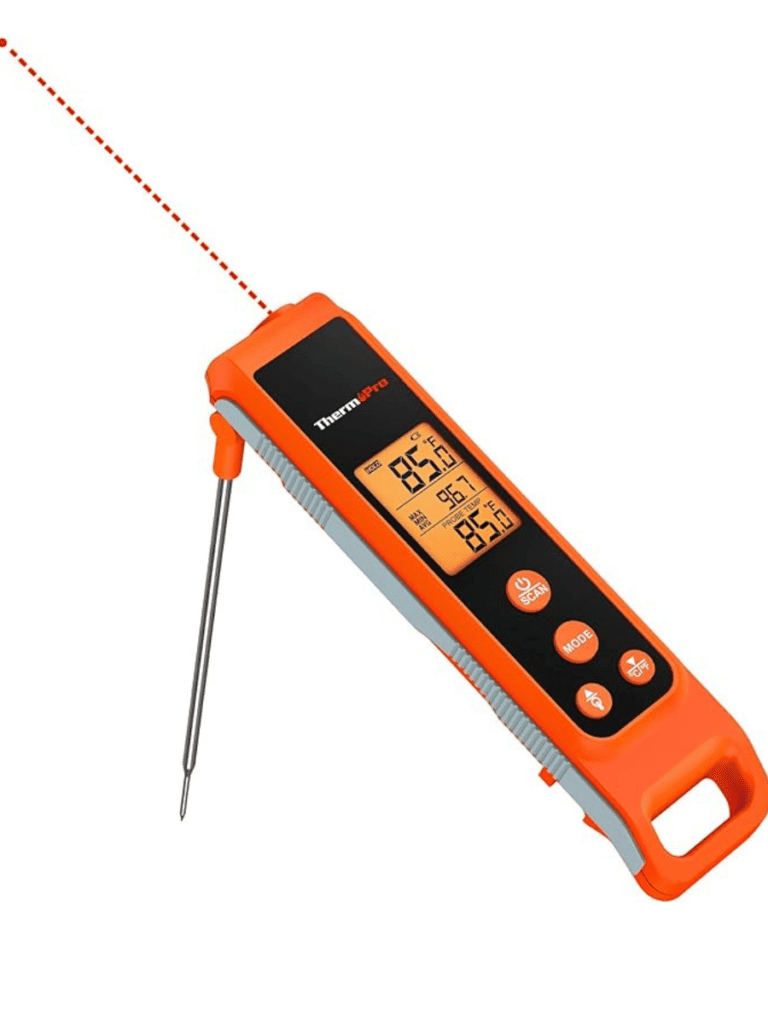
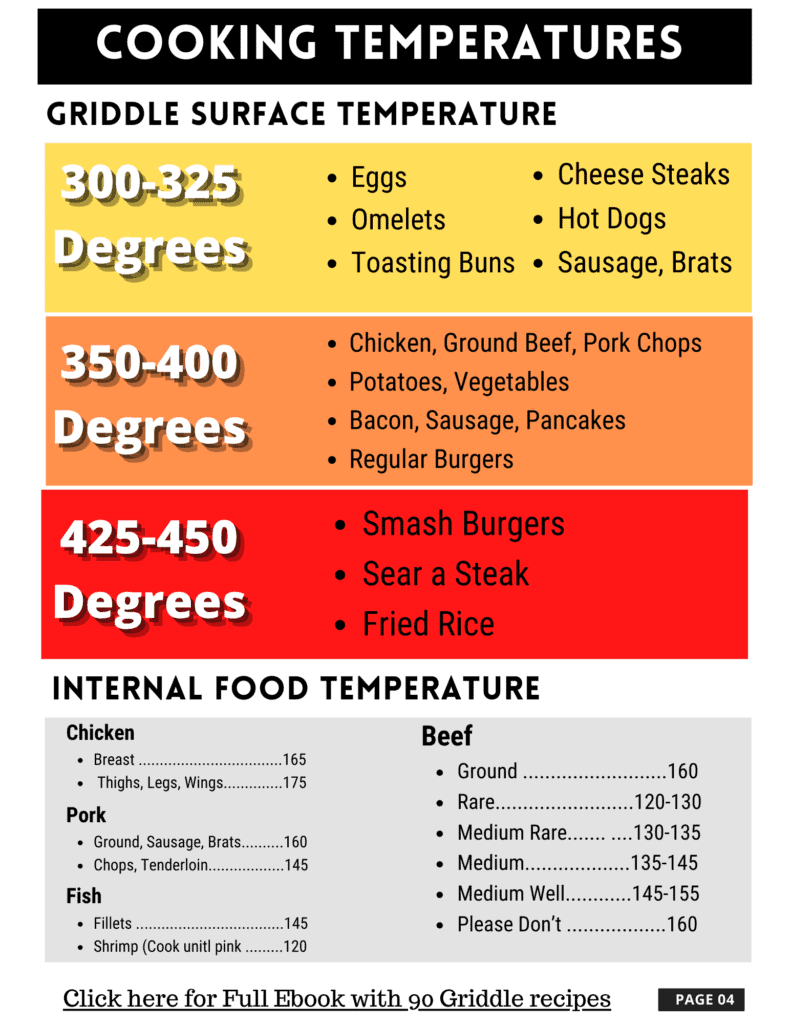
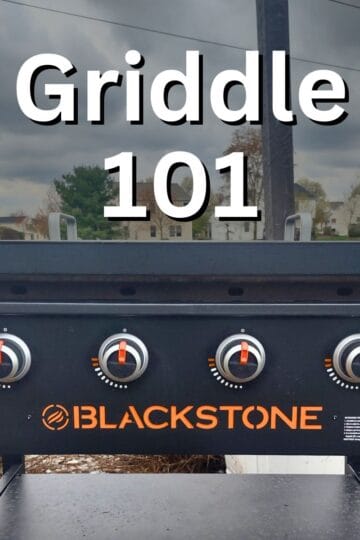
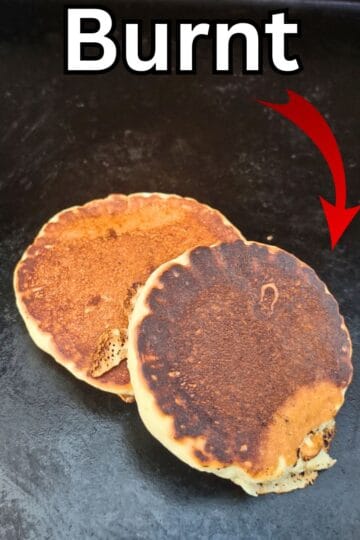
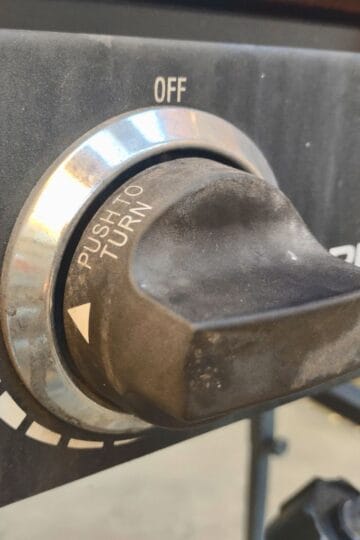
[…] Check out my full blog post on cooking order here: Two Most Important Skills for New Griddle Owners […]